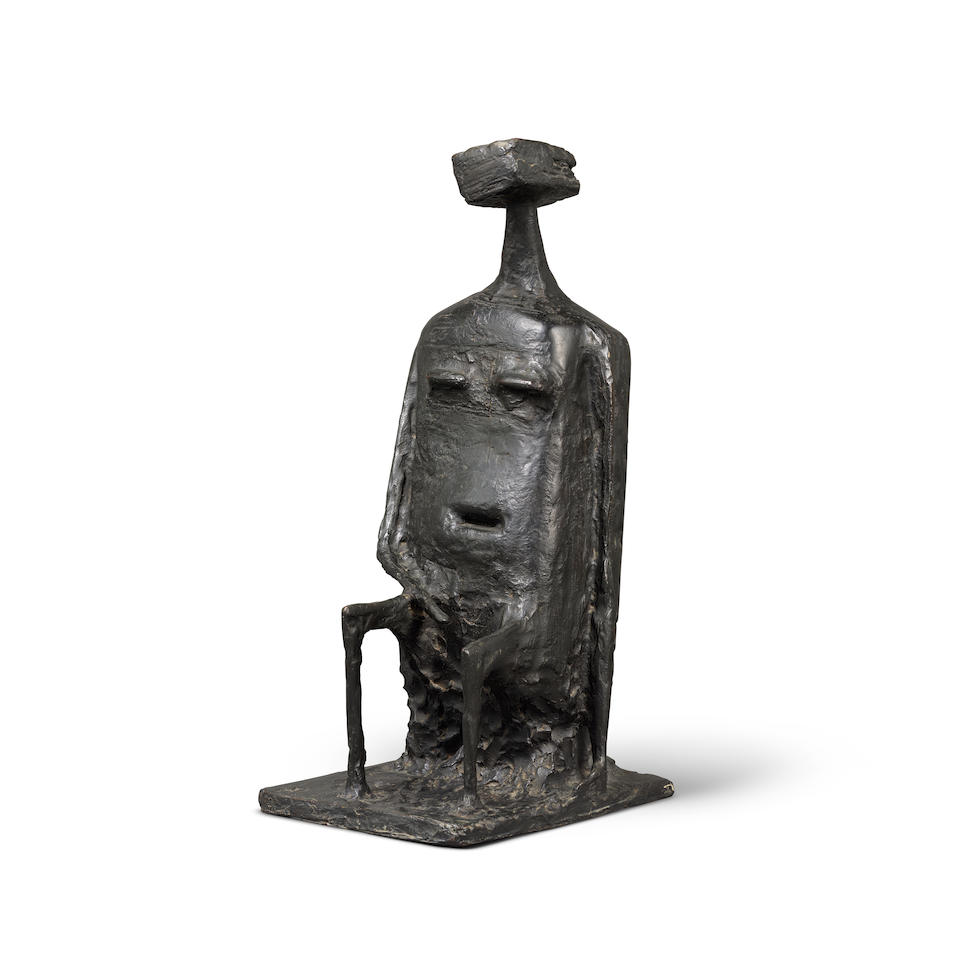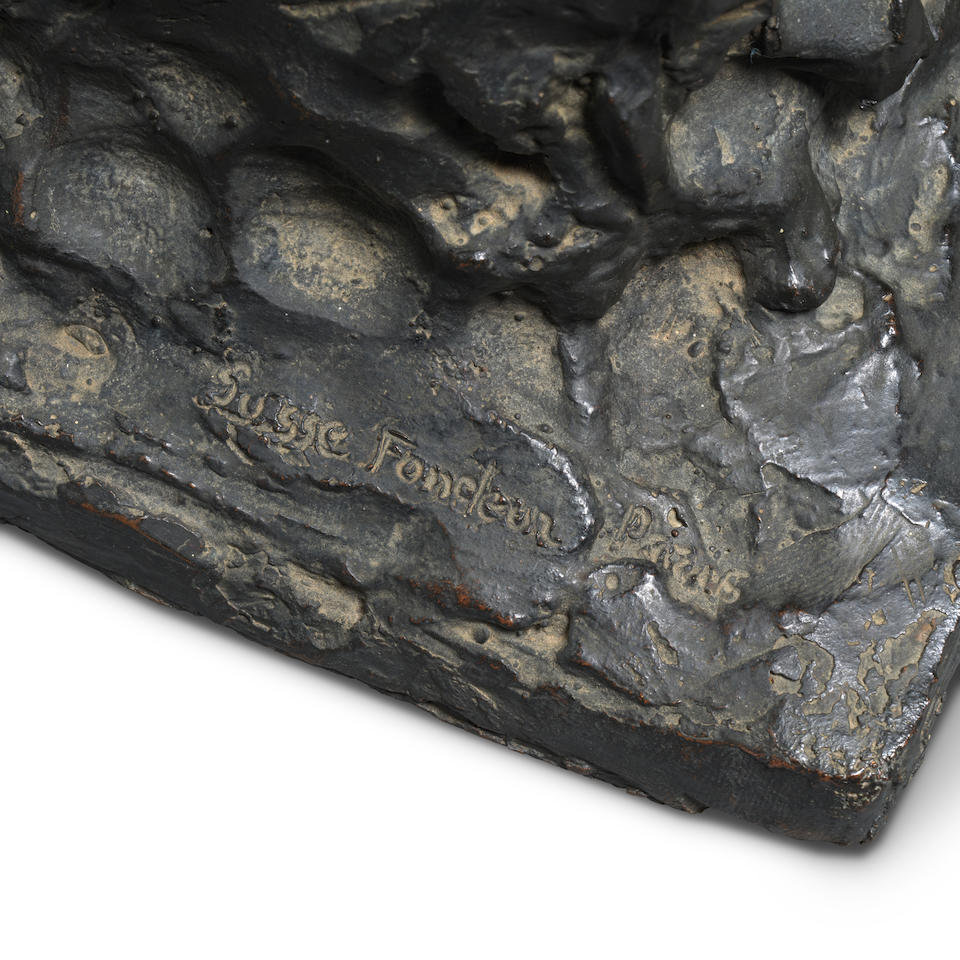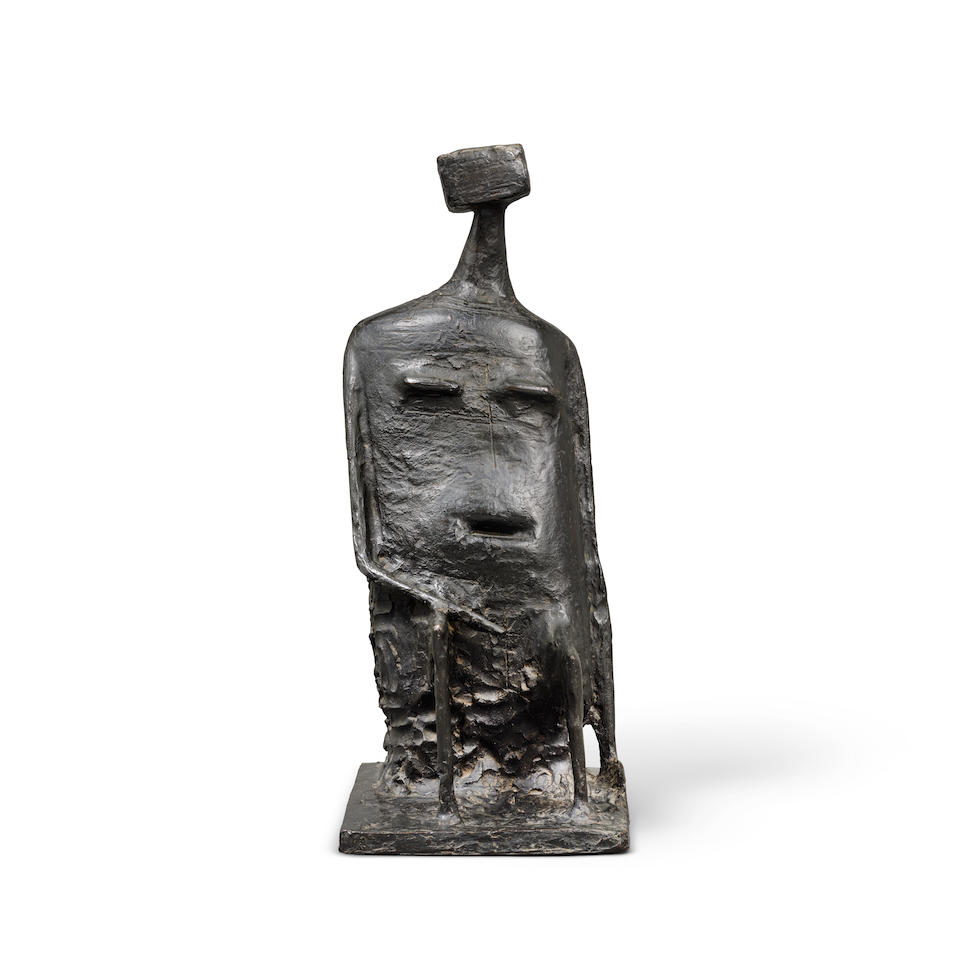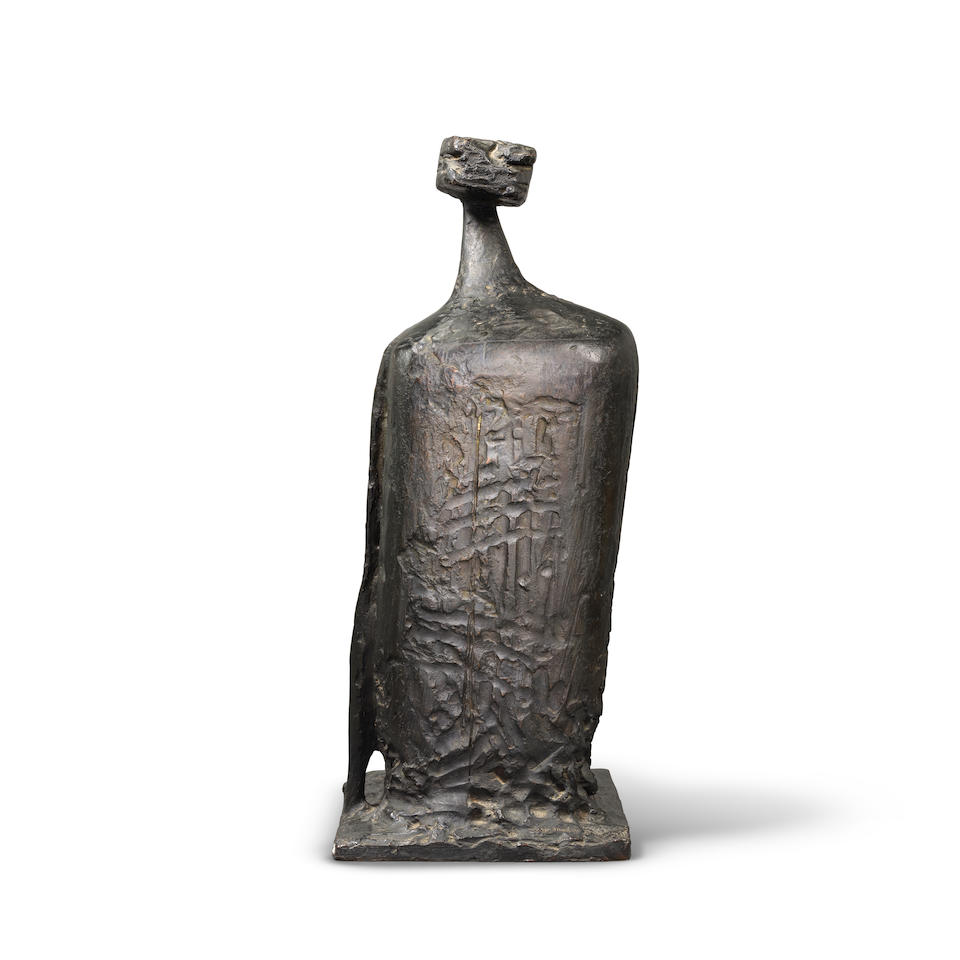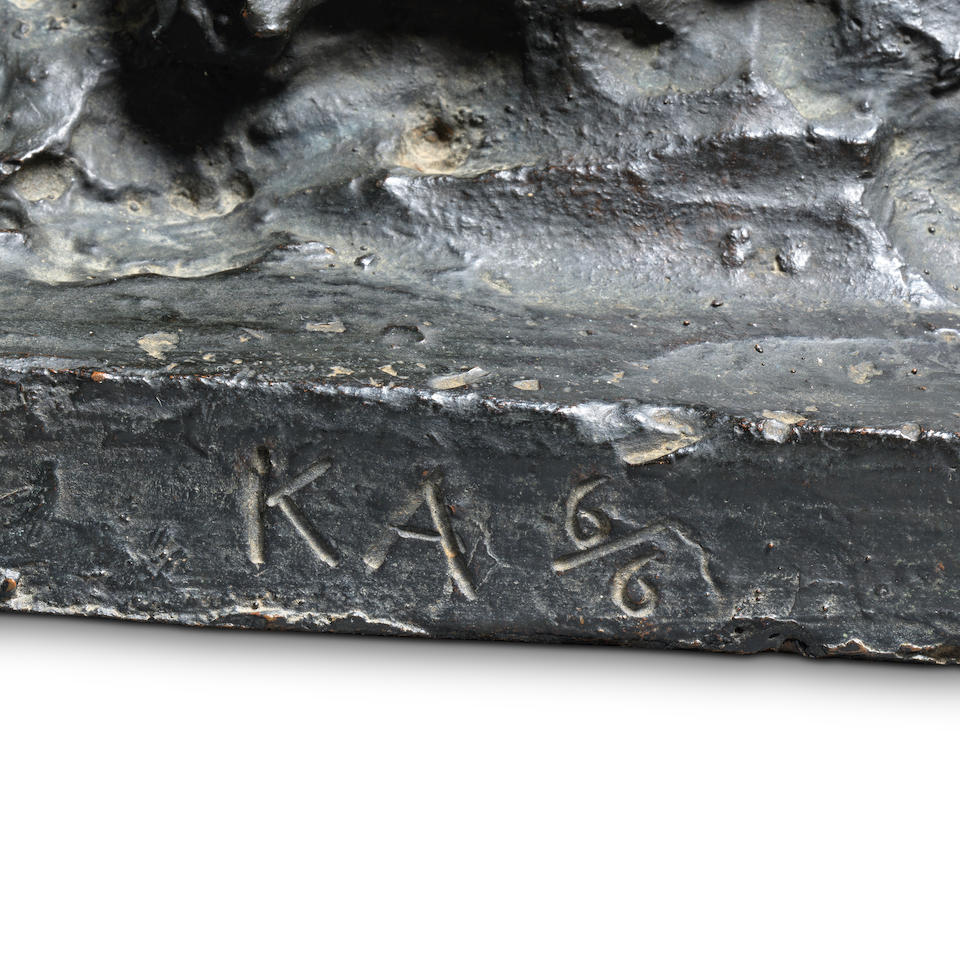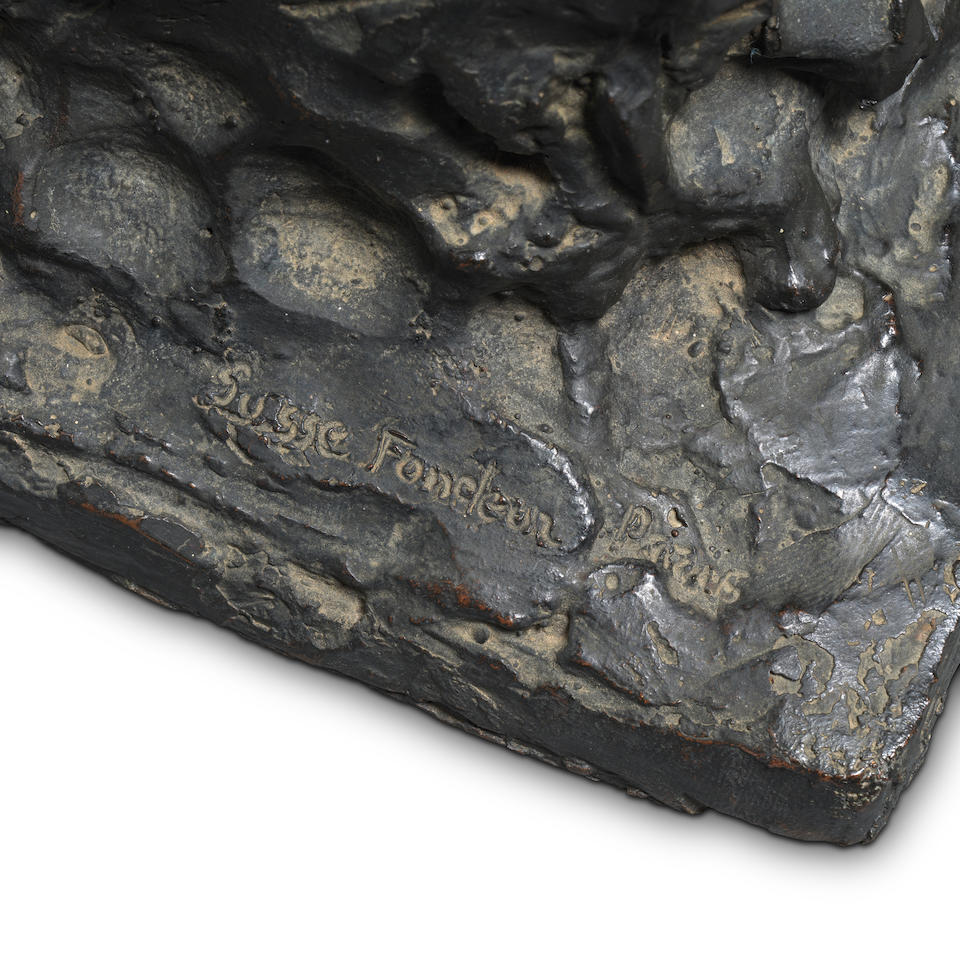153
Kenneth Armitage (1916-2002) Seated Woman with Square Head (Version B) 60 cm. (23 1/2 in.) high ...
You are about to place a bid of GBP
Timed Auction:Current bid:
Bids do not include VAT, buyer’s premium or delivery.
By confirming your bid, you agree that you have read and accepted the-saleroom.com and the auctioneer's terms and conditions. Confirming your bid is a legally binding obligation to purchase and pay for the lot should your bid be successful.
Bids do not include VAT, buyer’s premium or delivery.
By confirming your bid, you agree that you have read and accepted the-saleroom.com and the auctioneer's terms and conditions. Confirming your bid is a legally binding obligation to purchase and pay for the lot should your bid be successful.
We have noticed that your maximum bid is higher or equal to the buy it now price for this lot.
Would you like to discard your maximum bid and proceed with the buy it now option?
You cannot Buy it now until you are approved to bid.
Please contact the auctioneer (+44 20 7447 7447)
Choose one of the quick bid options below:
Bids do not include VAT, buyer’s premium or delivery.
By confirming your bid, you agree that you have read and accepted the-saleroom.com and the auctioneer's terms and conditions. Confirming your bid is a legally binding obligation to purchase and pay for the lot should your bid be successful.
To place a bid select the minimum amount below:
Bids do not include VAT, buyer’s premium or delivery.
By confirming your bid, you agree that you have read and accepted the-saleroom.com and the auctioneer's terms and conditions. Confirming your bid is a legally binding obligation to purchase and pay for the lot should your bid be successful.
Kenneth Armitage (1916-2002) Seated Woman with Square Head (Version B) signed with initials 'KA', numbered '6/6' and stamped with foundry mark (on the base) bronze with a black patina 60 cm. (23 1/2 in.) high Conceived in 1955 and cast by Susse Fondeur, Paris in 1957 Footnotes: Provenance With Galeira Conkrit, Caracas, 24 October 1974, where acquired by Private Collection Sale; Sotheby's, London, 22 November 2023, lot 173 With Alan Wheatley Fine Art, London, where purchased by the present owners Exhibited London, Gimpel Fils Gallery, Recent Sculpture by Kenneth Armitage, October–November 1957, cat.no.12 (another cast) Venice, British Pavilion, Biennale Internazionale d'Arte, June–October 1958, cat.no.71 (another cast) Antwerp, Middelheimpark, 5e Biennale voor Beeldhouwkunst, May–September 1959, cat.no.4 (another cast) Kassel, II. Documenta ' 59, Kunst nach 1945, Internationale Ausstellung, 11 July–11 October 1959, cat.no.2 (another cast) London, Whitechapel Art Gallery, A Retrospective Exhibition of Sculpture and Drawings Based on the XXIX Venice Biennale of 1958, July–August 1959, cat.no.24 (another cast) Ottowa, National Gallery of Canada, Recent British Sculpture, 14 April-14 May 1961 (another cast); this exhibition travelled to Christchurch, 20 November-9 December 1962 Literature Roland Penrose, Kenneth Armitage, Bodensee-Verlag, Amriswil, 1960, pl.12 and 16 (ill., another cast) Norbert Lynton (ed.), Kenneth Armitage, Methuen, London, 1962 Tamsyn Woollcombe (ed.), Kenneth Armitage Life and Work, The Henry Moore Foundation in association with Lund Humphries, London, 1997, p.46, cat.no.KA54 (ill., another cast) Kenneth Armitage Sculptor: A Centenary Celebration, Sansom & Company, 2016, p.82, pl.55 (ill., Tate cast) James Scott and Claudia Milburn (ed.), The Sculpture of Kenneth Armitage, Lund Humphries, London, 2016, cat.no.58C The present work is an excellent example of what Armitage looked to convey in his art, and what was received so well by the public. On a broader, more ideological level, Seated Woman with a Square Head (Version B) is quintessentially Modernist, in that it is a fundamentally human response to the modern world. In a more specific sense, it communicates this in a visual language built upon ideas of contemporary architecture, of light-weight, skeletal structures, steel and iron girders and the opening up of space from the inside, as Armitage himself described during a 1954 symposium on the arts in Leeds: 'the result was visually light, buoyant and crisp and the inner structure apparent from the outside...no longer [was it] a trapped volume of air...the use of metal gave the additional qualities of delicacy, contrast, tension and economy'. The distorted human figure in his work looks beyond the principal influences up to the modern age of Classical Greece and Rome, towards a more subjective response to reality seen in the art of Mesopotamia, Egypt, and Meso-America. In this instance, his distortions are radical; matchstick limbs, a flattened, block-like torso and head and a geometrised overall shape recall 'the mysterious dehumanisations of Alberto Giacometti and Henry Moore' (James Scott, The Sculpture of Kenneth Armitage, Lund Humphries, London, 2016, p.40). Yet despite this 'dehumanisation', Armitage remains essentially humanist – it is the human presence that lends his work its arresting quality, where in other sculptors this inherent, subconscious sense can be secondary to the manipulation of the chosen material. Such a focus on Humanism was not a given at this time. The present work was created in 1955 amidst a dynamic period of British art, in which Figuration and Abstraction were starting to polarise. Anthony Caro would return from America at the start of the 1960s along with a wave of commercial success for Abstract sculpture, despite seeing his latest work as a continuation of his earlier figurative phase. This illustrates what had perhaps become a false-dichotomy in critical circles, an illustration seen in Barbara Hepworth's emphasis on the figurative, human nature of her sculpture despite its abstract qualities, and mirrored also by Patrick Heron's self-analysis of his own stylistic shift in painting. With Armitage, though, where he stood in this supposed spectrum was never in doubt. His distorted figuration and the post-war Humanist ideas he sought to express captured the fertile imagination of his viewers with a tension and complexity quite distinctive of the era. We are grateful to James Scott for his assistance in cataloguing this lot. This lot is subject to the following lot symbols: AR AR Goods subject to Artists Resale Right Additional Premium. For further information on this lot please visit Bonhams.com For further information about this lot please visit the lot listing
Kenneth Armitage (1916-2002) Seated Woman with Square Head (Version B) signed with initials 'KA', numbered '6/6' and stamped with foundry mark (on the base) bronze with a black patina 60 cm. (23 1/2 in.) high Conceived in 1955 and cast by Susse Fondeur, Paris in 1957 Footnotes: Provenance With Galeira Conkrit, Caracas, 24 October 1974, where acquired by Private Collection Sale; Sotheby's, London, 22 November 2023, lot 173 With Alan Wheatley Fine Art, London, where purchased by the present owners Exhibited London, Gimpel Fils Gallery, Recent Sculpture by Kenneth Armitage, October–November 1957, cat.no.12 (another cast) Venice, British Pavilion, Biennale Internazionale d'Arte, June–October 1958, cat.no.71 (another cast) Antwerp, Middelheimpark, 5e Biennale voor Beeldhouwkunst, May–September 1959, cat.no.4 (another cast) Kassel, II. Documenta ' 59, Kunst nach 1945, Internationale Ausstellung, 11 July–11 October 1959, cat.no.2 (another cast) London, Whitechapel Art Gallery, A Retrospective Exhibition of Sculpture and Drawings Based on the XXIX Venice Biennale of 1958, July–August 1959, cat.no.24 (another cast) Ottowa, National Gallery of Canada, Recent British Sculpture, 14 April-14 May 1961 (another cast); this exhibition travelled to Christchurch, 20 November-9 December 1962 Literature Roland Penrose, Kenneth Armitage, Bodensee-Verlag, Amriswil, 1960, pl.12 and 16 (ill., another cast) Norbert Lynton (ed.), Kenneth Armitage, Methuen, London, 1962 Tamsyn Woollcombe (ed.), Kenneth Armitage Life and Work, The Henry Moore Foundation in association with Lund Humphries, London, 1997, p.46, cat.no.KA54 (ill., another cast) Kenneth Armitage Sculptor: A Centenary Celebration, Sansom & Company, 2016, p.82, pl.55 (ill., Tate cast) James Scott and Claudia Milburn (ed.), The Sculpture of Kenneth Armitage, Lund Humphries, London, 2016, cat.no.58C The present work is an excellent example of what Armitage looked to convey in his art, and what was received so well by the public. On a broader, more ideological level, Seated Woman with a Square Head (Version B) is quintessentially Modernist, in that it is a fundamentally human response to the modern world. In a more specific sense, it communicates this in a visual language built upon ideas of contemporary architecture, of light-weight, skeletal structures, steel and iron girders and the opening up of space from the inside, as Armitage himself described during a 1954 symposium on the arts in Leeds: 'the result was visually light, buoyant and crisp and the inner structure apparent from the outside...no longer [was it] a trapped volume of air...the use of metal gave the additional qualities of delicacy, contrast, tension and economy'. The distorted human figure in his work looks beyond the principal influences up to the modern age of Classical Greece and Rome, towards a more subjective response to reality seen in the art of Mesopotamia, Egypt, and Meso-America. In this instance, his distortions are radical; matchstick limbs, a flattened, block-like torso and head and a geometrised overall shape recall 'the mysterious dehumanisations of Alberto Giacometti and Henry Moore' (James Scott, The Sculpture of Kenneth Armitage, Lund Humphries, London, 2016, p.40). Yet despite this 'dehumanisation', Armitage remains essentially humanist – it is the human presence that lends his work its arresting quality, where in other sculptors this inherent, subconscious sense can be secondary to the manipulation of the chosen material. Such a focus on Humanism was not a given at this time. The present work was created in 1955 amidst a dynamic period of British art, in which Figuration and Abstraction were starting to polarise. Anthony Caro would return from America at the start of the 1960s along with a wave of commercial success for Abstract sculpture, despite seeing his latest work as a continuation of his earlier figurative phase. This illustrates what had perhaps become a false-dichotomy in critical circles, an illustration seen in Barbara Hepworth's emphasis on the figurative, human nature of her sculpture despite its abstract qualities, and mirrored also by Patrick Heron's self-analysis of his own stylistic shift in painting. With Armitage, though, where he stood in this supposed spectrum was never in doubt. His distorted figuration and the post-war Humanist ideas he sought to express captured the fertile imagination of his viewers with a tension and complexity quite distinctive of the era. We are grateful to James Scott for his assistance in cataloguing this lot. This lot is subject to the following lot symbols: AR AR Goods subject to Artists Resale Right Additional Premium. For further information on this lot please visit Bonhams.com For further information about this lot please visit the lot listing
Modernism at Mill Cottage: The Stuart and Claire H
Ends from
Venue Address
Important Information
Terms & Conditions
Buyers' Obligations
ALL BIDDERS MUST AGREE THAT THEY HAVE READ AND UNDERSTOOD BONHAMS' CONDITIONS OF SALE AND AGREE TO BE BOUND BY THEM, AND AGREE TO PAY THE BUYER'S PREMIUM AND ANY OTHER CHARGES MENTIONED IN THE NOTICE TO BIDDERS. THIS AFFECTS THE BIDDERS LEGAL RIGHTS.
If you have any questions about the Conditions of Sale, please contact your nearest client services team.
From 28 June 2025, the import into the EU of non-EU property of a certain age (and in some categories above a certain value) is subject to additional requirements. Under the relevant EU Regulation, it is the Buyer's sole responsibility to assess whether any Lot meets the criteria for import into the EU. The refusal of any required Import Licence or Importer Statement, or any delay in obtaining such Licence or Statement shall not give rise to the rescission or cancellation of any Sale, nor allow any delay in making full payment for the Lot.
Buyers' Premium and Charges
For all Sales categories, buyer's premium excluding Cars, Motorbikes, Wine, Whisky and Coin & Medal sales, will be as follows:
Buyer's Premium Rates
28% on the first £40,000 of the hammer price;
27% of the hammer price of amounts in excess of £40,000 up to and including £800,000;
21% of the hammer price of amounts in excess of £800,000 up to and including £4,500,000;
and 14.5% of the hammer price of any amounts in excess of £4,500,000.
A 3rd party bidding platform fee of 4% of the Hammer Price for Buyers using the following bidding platforms will be added to the invoices of successful Buyers for auctions starting on or after 6th July 2024 – Invaluable; Live Auctioneers; The Saleroom; Lot-tissimo.
VAT at the current rate of 20% will be added to the Buyer's Premium and charges excluding Artists Resale Right.
Payment Notices
For payment information please refer to the sale catalog.
Shipping Notices
For information and estimates on domestic and international shipping as well as export licenses please contact Bonhams Shipping Department.




















